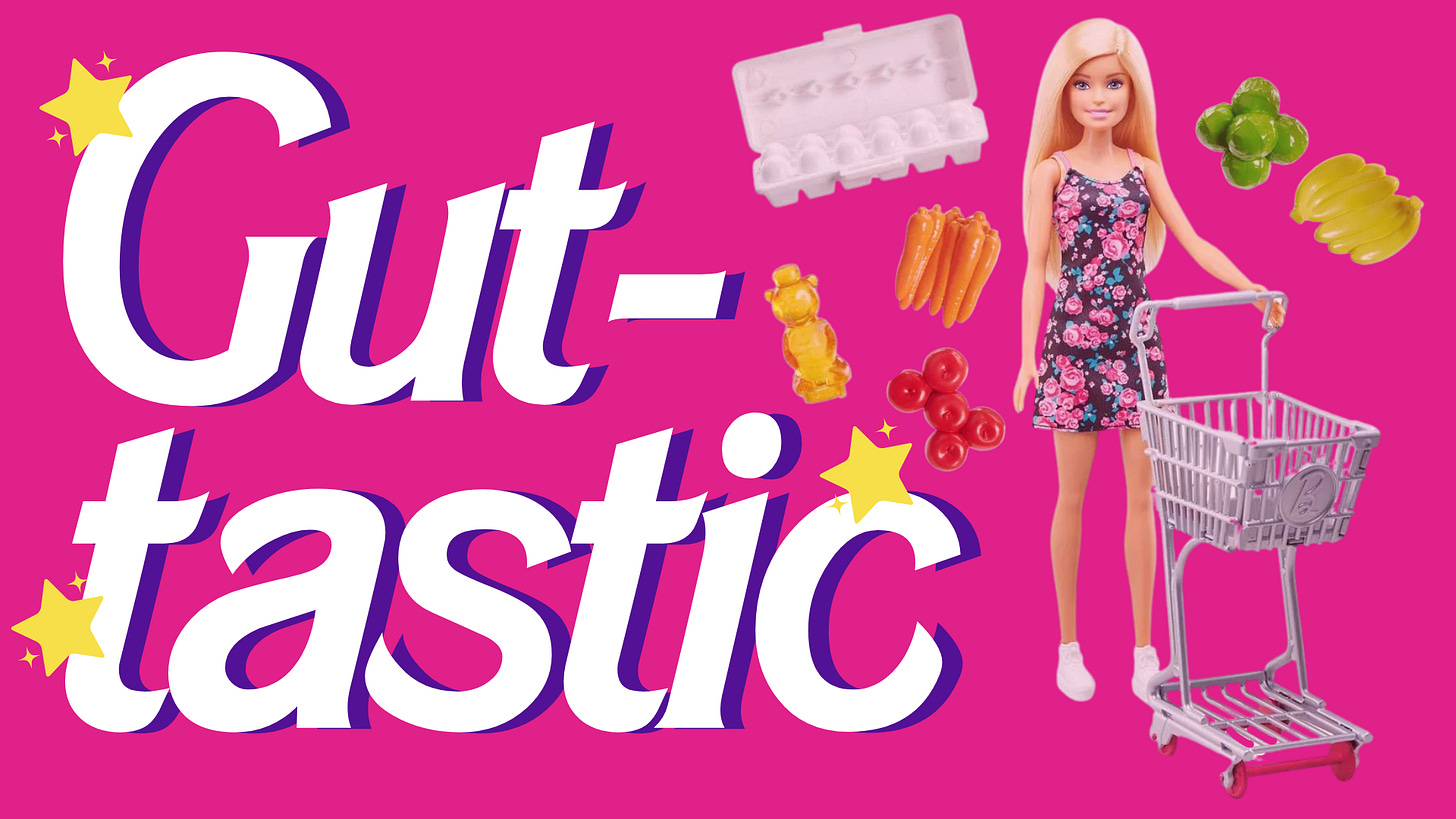Snaxshot#58: Gut-tastic!
LowFodmap is just getting started
Snaxshot is a newsletter on upcoming food and beverage trends that offers a curation of brands and aesthetics written by Andrea Hernández.
⚠️Upgrade to paid to acess deep dives like these!⚠️
Spoonful of News and Oracular Spectacular remain FREE as separate issue.
Patreon subscribers are automatically added to paid tier. Companies with 2 or more employees on subscription receive a group discount.
Peek into the Future 🔮
Where did biome go wrong?
Millennials bacterium delirium
Necessary gut checks
To adapt, eat low FODMAP
Full pantries, happy tummies
Of Gut and Flesh
In the beginnnig, there is nothing—inside our gut, literally, babies kinda start off with a clean slate, but by the time we’re full grown babies adults, our bodies have built an entire microbiome. Those of us, who were breastfed also benefitted from being able to build good bacteria that helped us fight off pathogens, but babies of industrialized nations today may not be so lucky —according to researchers at Stanford, the bacteria efficient at digesting breast milk are being lost as nations industrialize, and because no other bacteria are as capable at digesting milk, there is more concern that the decline in it will mean that newer generations will see a jump in rising cases of conditions common in the industrialized world, such as chronic inflammation.
The gut biome is said to be “malleable” —deteriorates as well as improves depending on environment, diet, etc. Take for example, though the rise in industrialization has probably led to more of us developing an intolerance to lactose, there’s belief that introducing more of certain bacteria can help alleviate the symptoms and improve a body’s ability to process it. In fact, researchers studying the last of hunter-gatherer groups like the Hazda tribes in Tanzania, reveals that these non-inudstrialized societies benefit from highly diverse and thriving microbiomes. Even though technological advancements have done wonders for extending our life expectancies as a collective it may have come by way of over correction, for example —the rise in cesarean sections, antibiotics and sanitation, diets with higher saturated fats and low dietary fiber, high intakes of artificial sweetners and emulsifiers, etc.
Primal Poo
The research performed by Stanford Medicine on the Hazda tribe yielded incredible surprises, like detecting microbial spieces that were novel and not found in the Unified Human Gastrointestinal Genome, a catalog of all bacteria that have been detected in the human gut microbiota. Though, does this mean it’s some sort of foreign faeces in our species?! *wink* (sorry, saw the opportunity and ran with it) To answer that, scientists and researchers consult the ancient knowledge hidden within paleo faeces to uncover what gut microbiomes looked like more than a millennia ago.
Using DNA, researchers from US and Canada, examined the microbial diversity in 1,000-2,000-year-old human faecal samples from the Southwest of the US and Mexico. The results were outstanding, researchers found 181 species of intestinal microbes in the paleofaeces, 39% of which were new to science. They then compared these against modern poo using both industrialized and non-industrialized lifestyles, as expected, the primeval poo included many many species, like the Treponema succinifaciens, which have been lost in industrial populations but can still be found in non-industrialized intestines. This research proved that non-industrialized microbiomes are more similar to the microbiomes of our ancestors, and that the gut microbiota of industrialized humans has begun to diverge…






